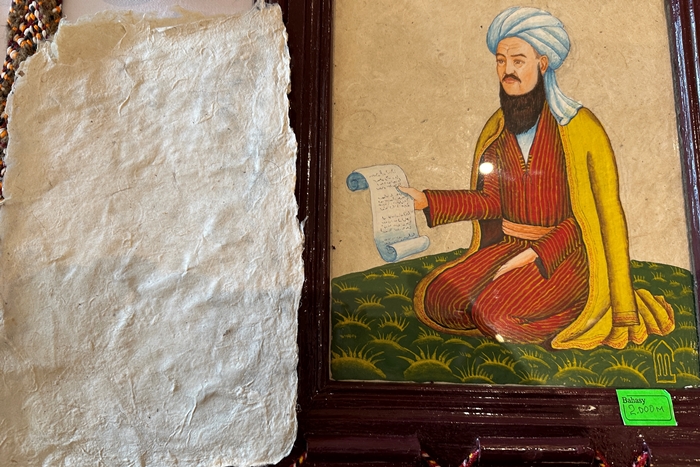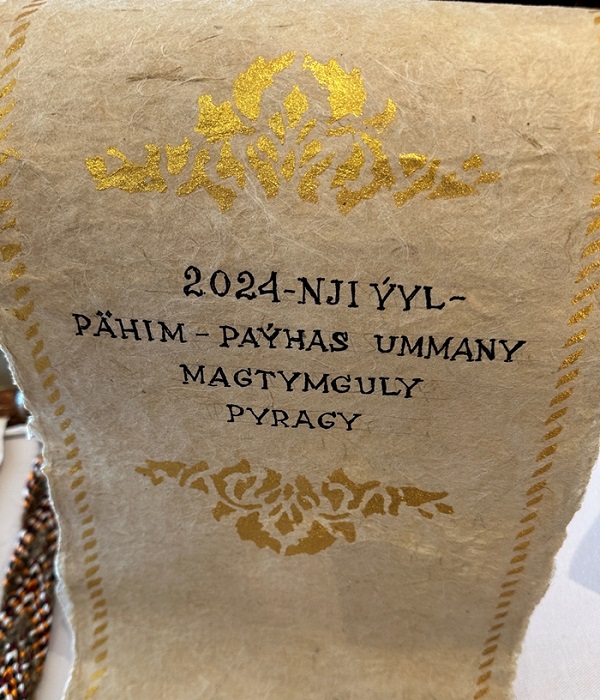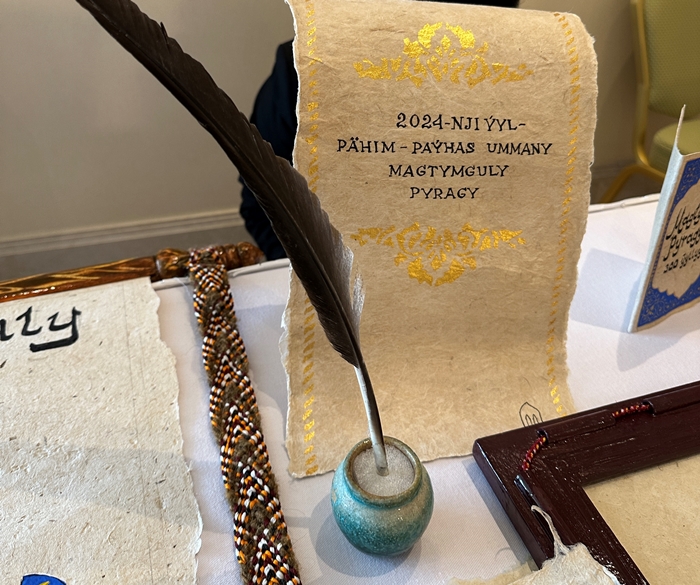nCa Report
The paper itself is a work of art and it retains its original shape and colour for more than 500 years. It is produced from mulberry bark.
The process of producing the paper from the mulberry bark is labour-intensive – it takes about a month of hard work with precise steps to obtain a batch of the exquisite, luxurious paper.
Gayrat Matkarimov from the Dashoguz province of Turkmenistan produces this paper. He calls it Silk Paper. This kind of paper is also called “Kozo Paper”, “Washi”, “Hanji”, or “Rice Paper.” There are different names because of the variations in the production process and the texture and look of the end product.
As to when did someone stumble on the technique for making this paper, we don’t know. The history only tells us that centuries ago the people in China or Central Asia started making paper from the mulberry bark and used it for manuscripts and works of art.
Come to think of it, the ancient manuscripts are also works of art in their own right.
We know that over time, its popularity spread across East Asia, including Japan and Korea, where it became an integral part of their artistic traditions.
Generally, the bark of the mulberry tree is harvested by hand and then boiled to soften it. Once softened, the bark is meticulously washed, cleaned, and beaten into a pulp. The pulp is subsequently applied to screens and allowed to air-dry when crafting handmade paper or processed within a paper mill for machine-made paper. The result is a delicate paper with a unique and easily recognizable texture.
Mulberry paper boasts several characteristics that make it highly sought after:
- Texture: Its unique textured surface adds depth and character to artwork, making it a preferred choice for various artistic endeavors. By blending traditional and innovative techniques, we can craft a multitude of beautiful textures perfect for your project.
- Strength and Durability: Despite its delicate appearance, mulberry paper is surprisingly strong and durable thanks to its long fiber strands, making it ideal for a wide range of artistic and practical applications.
Versatility is another characteristic of the mulberry paper. It can be used in a variety of arts and crafts, such as:
- Painting: You can use it for different types of painting like watercolors, ink, acrylics, and more.
- Calligraphy: You can use the mulberry paper of different textures and grades for calligraphy and illuminated texts.
- Home Decor: Mulberry paper’s distinctive texture and appearance make it an excellent choice for enhancing home decor. Additionally, it serves well as both a window shade and a lampshade.
 Mulberry paper is a timeless and cherished medium that combines the richness of tradition with endless creative possibilities. Whether you’re an artist, crafter, or simply someone who appreciates the beauty of handcrafted paper, mulberry paper is a treasure worth exploring. Its cultural significance, durability, and versatility make it a valuable addition to any creative project or collection.
Mulberry paper is a timeless and cherished medium that combines the richness of tradition with endless creative possibilities. Whether you’re an artist, crafter, or simply someone who appreciates the beauty of handcrafted paper, mulberry paper is a treasure worth exploring. Its cultural significance, durability, and versatility make it a valuable addition to any creative project or collection.
Magtymguly Pyragy (1724-1807), the national poet of Turkmenistan, used this kind of paper for writing some of his poetry.
* * *
Gayrat Matkarimov is the owner of Gurgench Kagyz Ussasy, a workshop specializing in the production of the mulberry bark paper and related products such as inks and colours and quill, the writing tool made from feather.
The phone number of Matkarimov is +993-64-162045. Their Instagram address is @Matkarimov3846
They have ready products for sale and they can also produce on demand the paper and other products. All of their products are collectors’ items. /// nCa, 2 July 2024







